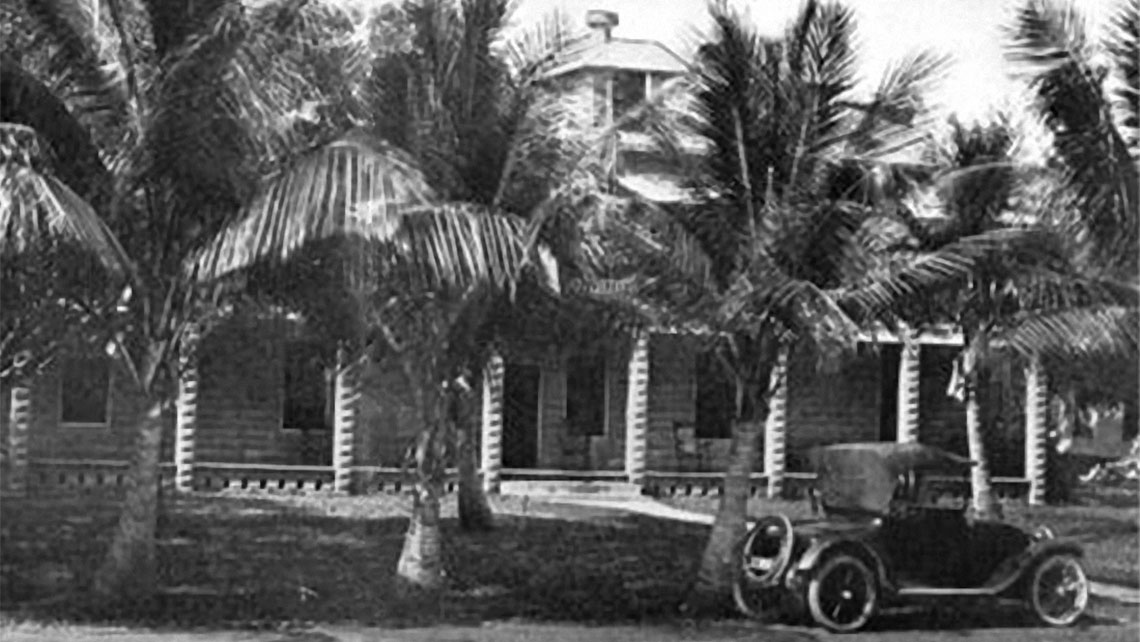For those who read a little city history, the name Philemon Bryan and his two sons, Tom and Reed, may be familiar. The three were major pillars of the town – instrumental in building Henry Flagler’s rail line, the town’s first major inn, the early infrastructure, major tomato farms, the first ice factory and much more.
This is not the story of three farmhands or carpenters who wandered down here and went on to greater things. This is the story of three driven men. Philemon was the former mayor of New Smyrna Beach, a successful farmer and entrepreneur. Tom and Reed were two spirited and adventurous young men who had all of the skills of their father but also benefited from college educations.
And then there were their wives. Lucy Bryan, Philemon’s wife, would run the New River Inn, after years of managing boarders and lodgers in New Smyrna. Camille, the wife of Tom Bryan, came from high standing in suburban Atlanta, where Tom attended Emory University. Her crisp and wry writing provides a vivid peek into just how things were in 1904.
Camille wrote about her arrival, having traveled by train from Georgia. It was nighttime when she disembarked and was greeted by a family friend. They walked “with only a dim lantern to light a very narrow sandy path to the Bryan home.” Tom Bryan had tried to prepare her for the rougher living in the new settlement, but she wrote, “I had not pictured a place quite so devoid of people. There were only four or five cottages, a store and a few Seminole Indians.”
Her first trip out of the Bryan home was “through the little path to the big store owned by Mr. Stranahan … located on the river front … with the Post Office in one corner.
“When we felt the need for exercise, our only walk in comfort was through [the] little path which led to the Stranahan home.”
During the week, Tom was at the farm most days. But on Sundays, the whole family “usually went out to look over the farm, not by automobile but by a little buckboard with a very wild horse.”
While the New River Inn and Bryan homes were located where the museums they became now are (on Second Avenue and the riverbank nearby), the farm was five miles to the west, up the waterway. According to an 1889 article by a Miami Metropolis reporter, the farm had acres of tomatoes and 500 new orange trees planted. Overseen day-to-day by Reed Bryan, it was located “on the edge of the Everglades.”
That area is just west of 1-95 where I-595 is today before it hits State Road 7. Edge of the Everglades? Ponder that, all ye folks in Weston.
Meanwhile, without Philemon Bryan’s wife Lucy, we may not have had the New River Inn. Mrs. Bryan (senior) had an active life in New Smyrna working with the various family enterprises. With Lucy being so isolated in the new settlement, they thought it would be a good thing for her to run an inn. It was built in 1905 with 24 rooms, including residences for the family. Tom Bryan took the leadership role, working with builder Ed King. The two developed a groundbreaking structure built of hollow concrete block and Dade County Pine that has withstood time and tide – and massive hurricanes.
As proprietess, Lucy Bryan was propelled into the spotlight. On Sundays, Mrs. Bryan provided sumptuous meals for growers and visiting merchants, invited three or four at a time. That was when growers came down the New River to pick up their mail at the Stranahan trading post. (Yes, post office open Sunday.)
A book could be written about all the Bryan exploits, and indeed an excellent one has been. In Tom Bryan and other Movers and Shapers of Early Fort Lauderdale, Keith Mitzner mines the Fort Lauderdale Historical Society’s trove of letters, news accounts and other documents to stitch a lively read.
The Bryan contribution lasted well beyond these early years. When the New River settlement was incorporating as a city, it was Reed Bryan who proposed the name Fort Lauderdale to the City Council, according to historian Stuart McIver. Tom Bryan was a council member at the time. Later, when it was time for Fort Lauderdale to break away from Dade and Palm Beach counties, it was Tom who was sent as a negotiator to Tallahassee and helped determine the boundaries of the new “Broward County.”
It may have been the freeze of 1895 – which ruined Philemon Bryan’s citrus crop in New Smyrna – that prompted him to look south. Whatever the reason, that city’s loss was most decidedly our gain.












